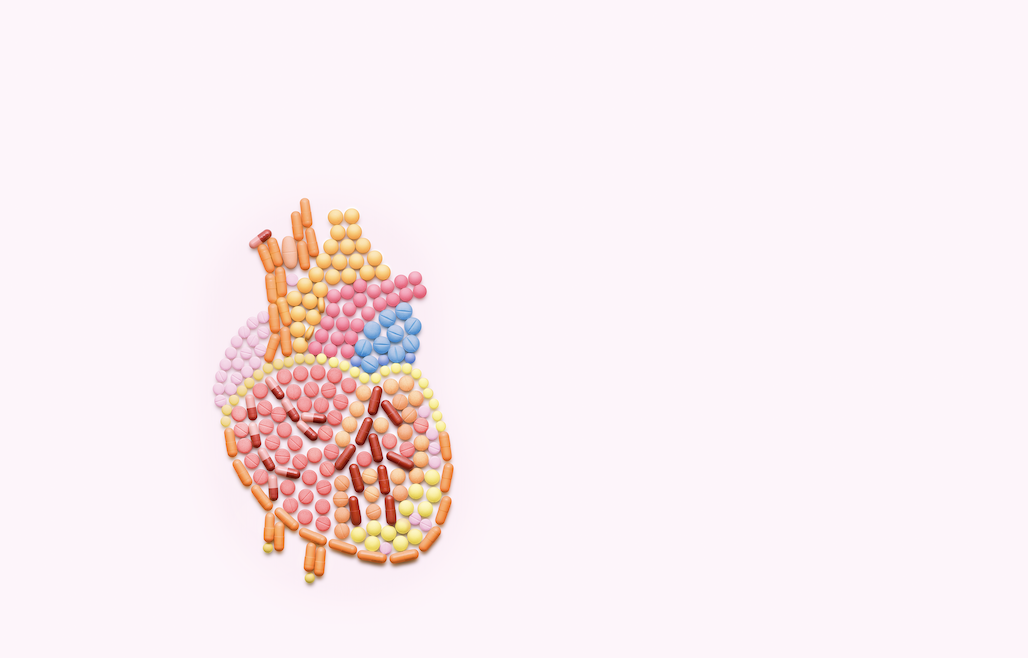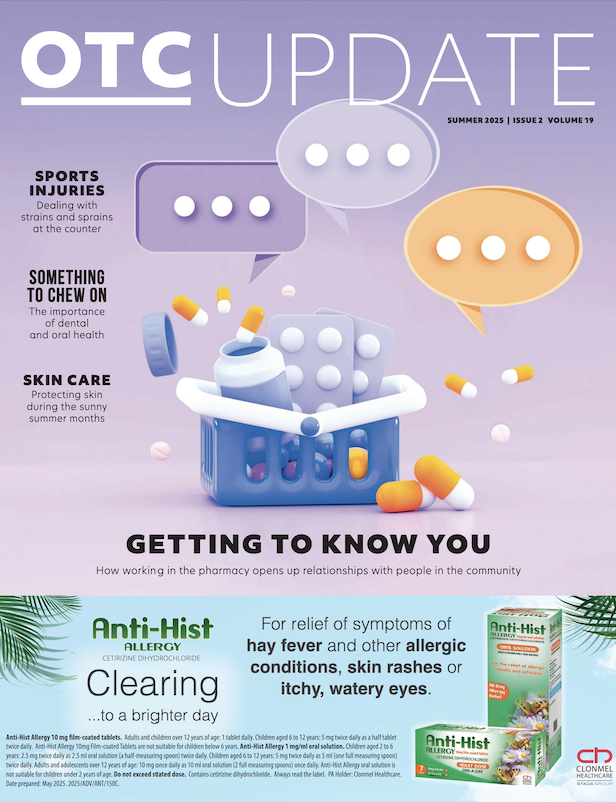Damien O’Brien MPSI provides a clinical overview of common illnesses in infants and how pharmacists and parents can help to provide care
Infant care is a critical aspect of early childhood development. Infancy is a time of rapid growth and development, including both physical and cognitive changes. Proper nutrition is essential for the adequate growth and development of organs, while social interactions are vital for brain development. A neonate, or newborn infant, refers to a baby up to 28 days old; an infant is a child up to 12 months old; and a toddler is older than 12 months. Many infectious diseases are more common in infants than in other age groups and can be associated with significant morbidity and mortality.1,2,3
Infancy is a period of many complex physiological changes as the infant interacts with different stimuli.
Infant care during this time should be continuous and effective. Infant care is essential for early childhood development and requires attention to hygiene, nutrition, vaccinations, and general health to ensure optimal growth and wellbeing. Pharmacists are
accessible healthcare professionals who play a crucial role in supporting parents and caregivers by providing information on various aspects of infant care, including medication safety, common health conditions, infant nutrition, vaccination schedules, and preventive healthcare measures. This article explores the fundamentals of infant care, including best practices, immunisation schedules, nutrition, common infant ailments, and the role of pharmacists in ensuring infant wellbeing.4

Good infant care practices
Ensuring proper infant care requires a combination of hygiene, feeding, sleep, and safety precautions. These factors are important for supporting healthy growth and development, as well as preventing illnesses. Infant safety precautions are essential to protect against drowning, burns, fires, and many other hazards inside and outside the home. Safe sleep practices are necessary to promote healthy development and to prevent accidents or harm.
Hygiene and skin care are also crucial components of infant care. Infants tend to have sensitive skin that is prone to irritation, rashes, and infections. Mild, unscented cleaning agents should be used to prevent skin reactions.
Nappy care is another important aspect of infant hygiene. Nappy rash can occur due to prolonged exposure to irritants and moisture. Frequent nappy changes can help prevent rashes, while barrier creams may protect the skin. Antifungal creams may also be necessary to treat severe cases of nappy rash.6
Powders are also effective in treating nappy rash and helping to prevent its return. A medicated powder protects an infant’s skin by soothing irritation and attacking harmful bacteria.
Powders are sometimes used after ointment is applied, to help hydrate the skin and act as a moisturiser. A medicated powder can also protect against prickly heat and fights bacteria in delicate skin folds.
Immunisation schedule
Vaccinations are administered to protect infants from serious infectious diseases. Infants are vulnerable and at a high risk of complications from many infectious diseases. Routine childhood immunisation has led to major reductions in the incidence of many illnesses, decreasing morbidity, disability, and mortality caused by preventable diseases. Vaccination is one of the most effective ways to protect infants from serious infections. In Ireland, the National Immunisation Programme provides a schedule of vaccines free of charge to infants and children.6
Pharmacists play a vital role in educating parents and caregivers on the importance of vaccines. This includes addressing concerns about adverse effects and encouraging adherence to the immunisation schedule. Maintaining and improving vaccine coverage is essential to keep disease incidence levels low.
Pharmacists should provide evidence-based information to reassure parents about vaccine safety and efficacy. Common concerns, such as fever or injection site reactions, should be explained as normal immune responses.6
Infant nutrition
Nutrition is critical for an infant’s growth, development, and immune function. Pharmacists can offer guidance on many aspects of infant nutrition, including breastfeeding, formula feeding, and the introduction of solid foods. Breastfeeding provides many benefits for both mother and infant, including excellent nutrition, antibodies that protect against infections, support for digestion, and promotion of bonding between mother and child.
Pharmacists can provide support on proper latch techniques, nipple care, and addressing issues such as lactation support and safe medications for breastfeeding mothers. Infant formula is a safe alternative to breastfeeding. Counselling on the appropriate selection of formula and identifying signs of intolerance
is important to support growth and development in infants. Weaning and the introduction to solid foods is an important transition for infants. Pharmacists can offer advice on appropriate food selection and
how to address concerns such as choking, food intolerance, colic, reflux, flatulence, and constipation.5
Common infant conditions and management
Infants commonly contract a variety of illnesses. Most conditions are self-limiting and resolve within one or two weeks. However, these common health conditions may cause significant stress for parents and caregivers. Pharmacists often assist in managing common conditions with medical advice or over-the-counter treatment options. Pharmacists may refer an infant to a general practitioner in certain cases, while urgent medical attention is advised if the infant is unresponsive, has difficulty breathing, has a persistent very high temperature, has neck stiffness, has blue lips or tongue, is having seizures, or has a rash that doesn’t fade when it is pressed.7
Infections
Infectious diseases can occur at any age but are particularly concerning in infants due to their underdeveloped immune systems. While antibodies pass from the mother to the baby, these antibody levels may not be sufficient to fight off infections. Infections may have a viral, fungal, or bacterial origin.8
Fungal infections
Fungal infections in infants are often caused by the Candida species and can result in nappy rash and oral thrush. Ensuring proper cleaning and drying of the nappy area can reduce the risk of nappy rash, while using a protective barrier cream or antifungal treatment can help manage the condition.14 Oral thrush is a common fungal infection in infants. Symptoms of oral thrush include white spots in the mouth, a white coating on the tongue, and reluctance to feed. Oral miconazole gel or nystatin oral suspension can be used to treat oral thrush in infants.5,8
Bacterial infections pose a significant threat to infants and can cause a wide range of illnesses
Bacterial infections
Bacterial infections pose a significant threat to infants and can cause a wide range of illnesses, from mild, self-limiting conditions to severe, life- threatening diseases. Each bacterial infection has its own specific clinical presentation and complications, necessitating a tailored treatment approach. Early detection and appropriate treatment are essential to prevent complications. Urinary tract infections occur due to bacterial colonisation in the urinary tract, often resulting from improper hygiene. Symptoms include pain during urination, cloudy or foul- smelling urine, fever, and irritability. Antibiotic therapy should be tailored to the specific bacteria identified through urine culture and sensitivity testing, with options including amoxicillin, cefalexin, trimethoprim, or nitrofurantoin.9
Bacterial respiratory infections in infants can manifest as pneumonia or bronchitis. Symptoms may include cough, difficulty breathing, fever and lethargy, with severe cases potentially leading to respiratory distress and hospitalisation. Treatment typically involves administering appropriate antibiotics, such as azithromycin and amoxicillin, and providing supportive care, including oxygen therapy and hydration if necessary.10
Impetigo is a highly contagious bacterial skin infection characterised by red sores or blisters that may ooze. It is generally self-limiting and resolves within a couple of weeks. Treatment includes maintaining good skin hygiene and administering topical or oral antibiotics, depending on the severity.11
Viral infections
Similar to bacterial infections, infants are vulnerable to viral infections due to their immature immune systems. While many viral illnesses are mild and self-limiting, some can lead to severe complications. Preventing viral infections in infants involves good hygiene practices, vaccination, and avoiding close contact with sick individuals.
Hand, foot, and mouth disease is a common viral illness in infants. Initial symptoms include a sore throat, fever, irritability, and loss of appetite. Mouth ulcers and a rash on the hands and feet usually appear after a few days. The illness is usually self-limiting, and symptoms can be treated with paracetamol and ibuprofen, with maintaining hydration being essential, as dehydration is one of the main complications of this illness.12
Respiratory viruses are common in infants and can range from mild colds to severe lower respiratory tract infections. The common cold is frequently caused by viruses such as rhinoviruses and adenoviruses, characterised by a runny nose, cough, sneezing, mild fever, and irritability. Influenza can cause severe illness in infants, particularly those under six months who are too young to be vaccinated. Symptoms include fever, cough, sore throat, body aches, and irritability. Treatment for both viruses involves supportive care with fluids, nasal drops, and fever management, while antiviral medications like oseltamivir may be considered in severe cases of influenza.13
Respiratory syncytial virus (RSV) is a common respiratory virus that spreads in winter and early spring
and is a leading cause of bronchiolitis and pneumonia in infants. It is highly contagious and spreads through respiratory droplets and contact with contaminated surfaces. Symptoms are mostly mild and include nasal congestion, cough, fever, and wheezing, with most patients recovering within two weeks without the need for further treatment. In more severe cases, infants may develop difficulty breathing, poor feeding, and lethargy.
RSV can lead to respiratory failure and hospitalisation in very severe cases, with premature infants and those with underlying health conditions at a higher risk for severe RSV. There is no specific antiviral treatment for RSV, so supportive care is the mainstay of management. There is no vaccine against RSV; however, Nirsevimab is a monoclonal antibody that offers passive immunity and was recently introduced in Ireland’s immunisation programme in winter 2024/2025.13
Colic, reflux, and teething
Colic is a common condition that affects up to 20 per cent of infants and is characterised by excessive, unexplained crying in babies who appear otherwise healthy. Other symptoms can include clenching of fists, restlessness, and redness in the face. It usually starts at two weeks and resolves by four months of age. The cause is unknown, but it may be due to intolerance to cow’s milk, gastrointestinal inflammation, poor feeding technique, or maternal smoking. Simethicone drops may be used to treat colic, though their efficacy is debated. Other strategies may include proper winding, using anti-colic bottles, and providing reassurance to parents and caregivers.14
Many infants experience gastroesophageal reflux, leading to frequent spitting-up. While this is usually benign, pharmacists can suggest smaller, more frequent feeds, keeping the baby upright after feeding, and ruling out cow’s milk protein allergy in persistent cases.
Gastroesophageal reflux is a common condition in infants, affecting up to 40 per cent of infants. It is defined as the passage of stomach contents into the oesophagus with or without accompanying regurgitation and vomiting. Reflux usually improves and resolves before the infant is 12 months old, without the need for pharmacological treatment. Proton pump inhibitors and histamine (H2) receptor antagonists are effective in treating reflux and may be considered if other options fail.15
Teething in infants can cause irritability, drooling, and gum discomfort. Sugar-free teething gels, chilled teething rings, and cold water may help to improve symptoms. Age-appropriate paracetamol or ibuprofen formulations may be used for pain relief if required.16
Role of the pharmacist in infant care
Pharmacists play an important role in educating and supporting parents and caregivers in all
aspects of infant care. They provide evidence-based advice on vaccinations and common infant ailments. Pharmacists can recognise serious symptoms that may require referral to a doctor. Furthermore, they can counsel on infant feeding and nutrition. Pharmacists also ensure safe medication use by counselling on correct dosing and adverse effects while warning against unsafe medication use. Pharmacists are accessible and knowledgeable healthcare professionals who can make a significant contribution to healthier outcomes for infants and peace of mind for parents and caregivers.
References
1. Who.int. (2025). Newborns and children under 5 years. [online]
2. CDC (2024). Positive parenting tips: Infants (0–1 years). [online] Child Development.
3. Patel JK and Rouster AS. (2023). Infant nutrition requirements and options. [online] PubMed.
4. Perez BP and Mendez MD. (2020). Routine newborn care. [online] PubMed
5. HSE.ie. (n.d.).Babies and children. [online]
6. HSE.ie. (n.d.). Baby and childhood immunisation. [online]
7. HSE.ie. (2023). Babies and children – when to see your GP. [online]
8. HSE.ie. (n.d.). Oral thrush (mouth thrush). [online]
9. Weinberg GA. (2024). Urinary tract Infection (UTI) in children. [online] MSD Manual Consumer Version
10. Simoes E, Cherian T, Chow J, Shahid-Salles SA, Ramanan Laxminarayan and T Jacob John (2019). Acute respiratory infections in children. [online] Nih.gov
11. HSE.ie. (n.d.). Impetigo.
12. HSE.ie. (n.d.). Hand, foot, and mouth disease. [online]
13. HSE.ie. (n.d.). Colds, coughs, and viral infections in children. [online]
14. HSE.ie. (n.d.). Colic in babies. [online]
15. HSE.ie. (n.d.). Reflux in babies. [online]
16. HSE.ie. (2022). Your baby and teething. [online]







